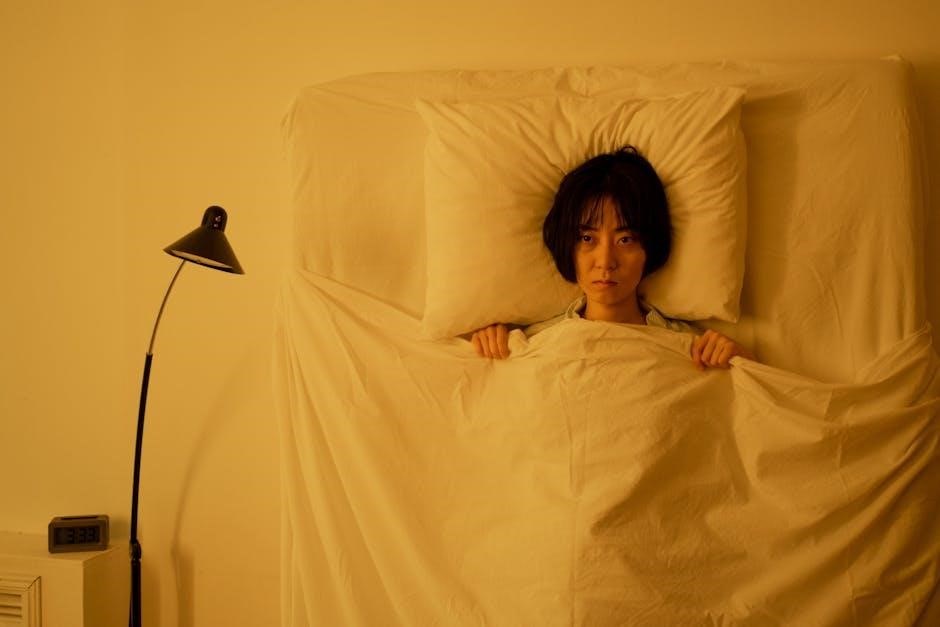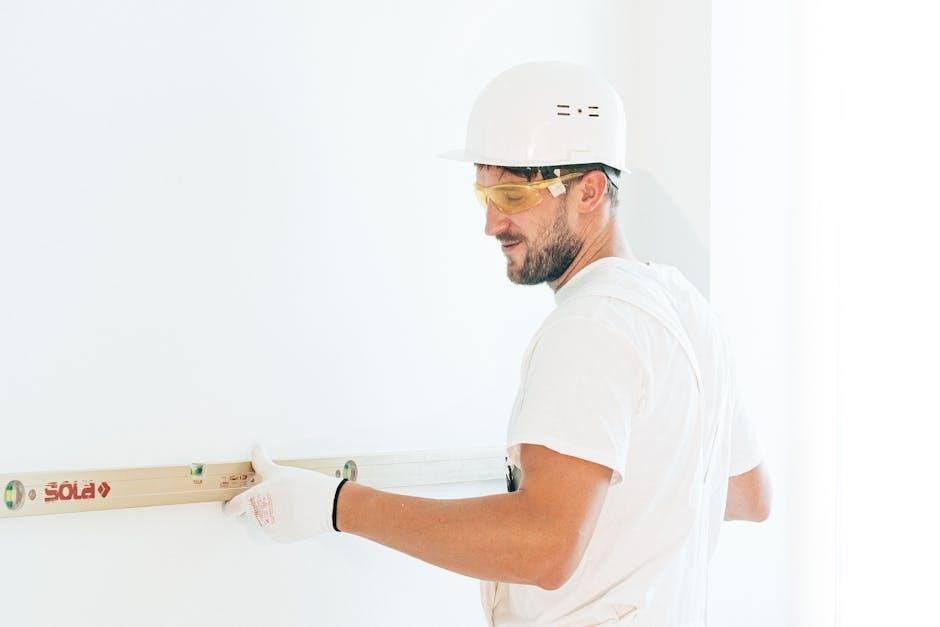Welcome to the Wii Troubleshooting Manual! This guide is designed to help you resolve common issues with your Wii console quickly and effectively. From connectivity problems to hardware malfunctions, we cover it all. Whether you’re experiencing disc errors, controller issues, or software glitches, this manual will provide you with clear, step-by-step solutions to get your Wii running smoothly again. Let’s get started and ensure your gaming experience remains uninterrupted!

Common Wii Issues
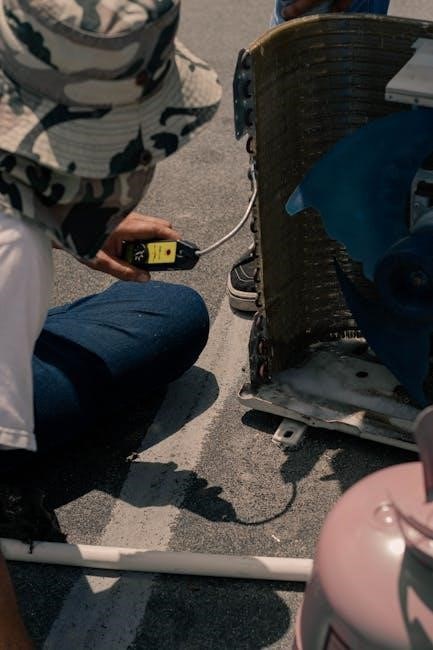
The Nintendo Wii, while beloved by many, often encounters specific issues that can disrupt gameplay. Common problems include Internet connectivity failures, such as unable to connect to Wi-Fi or experiencing slow speeds. Disc-related issues, like the console not recognizing discs or games freezing, are also frequent. Controller connection problems, such as syncing difficulties or random disconnections, can frustrate players. Additionally, power-related issues, like the console not turning on or sudden shutdowns, are prevalent. Display and audio problems, such as no signal on TV or sound distortion, may arise. Finally, software update errors can hinder system performance. Understanding these issues is key to resolving them effectively and ensuring a smooth gaming experience.
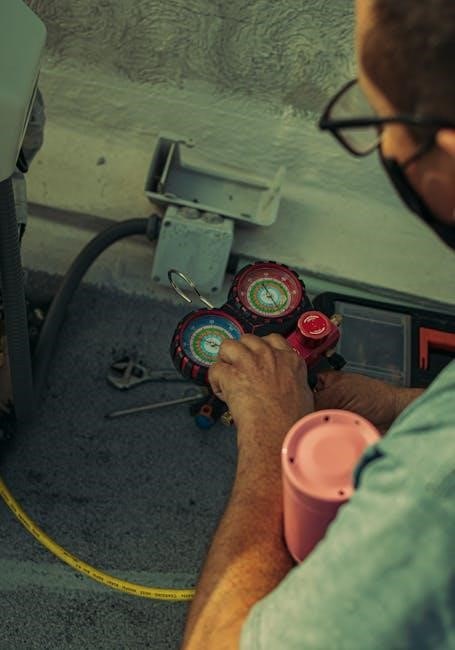
Internet Connectivity Troubleshooting
Troubleshooting Wii internet issues starts with checking your Wi-Fi connection. Ensure other devices connect successfully and restart your Wii. Verify Wi-Fi settings match your router’s configuration. Move the Wii closer to the router for a stronger signal and check for software updates. If issues persist, visit Nintendo’s support page for further guidance.
Unable to Connect to Wi-Fi
If your Wii fails to connect to Wi-Fi, start by ensuring other devices can connect to your network. Restart the Wii and check that its Wi-Fi settings match your router’s. Move the Wii closer to the router to improve signal strength and ensure no physical obstructions are present. Verify that your router supports the Wii’s 802.11b/g Wi-Fi standard. If issues persist, perform a system update or reset the Wii’s network settings. For further assistance, visit Nintendo’s official troubleshooting guide or consult the Wii Owners Manual.
Slow Internet Speeds
Slow internet speeds on your Wii can hinder online gaming and downloads. Begin by testing your connection speed using another device. If speeds are slow across all devices, contact your internet provider. Ensure your Wii is placed near the router to maximize signal strength. Reduce the number of connected devices to minimize bandwidth usage. Check for physical obstructions and electromagnetic interference from devices like microwaves or cordless phones. Ensure your Wii’s firmware is up-to-date, as updates often improve connectivity. If issues persist, restart your router and Wii. For further assistance, visit Nintendo’s support page or consult the Wii Troubleshooting Guide.
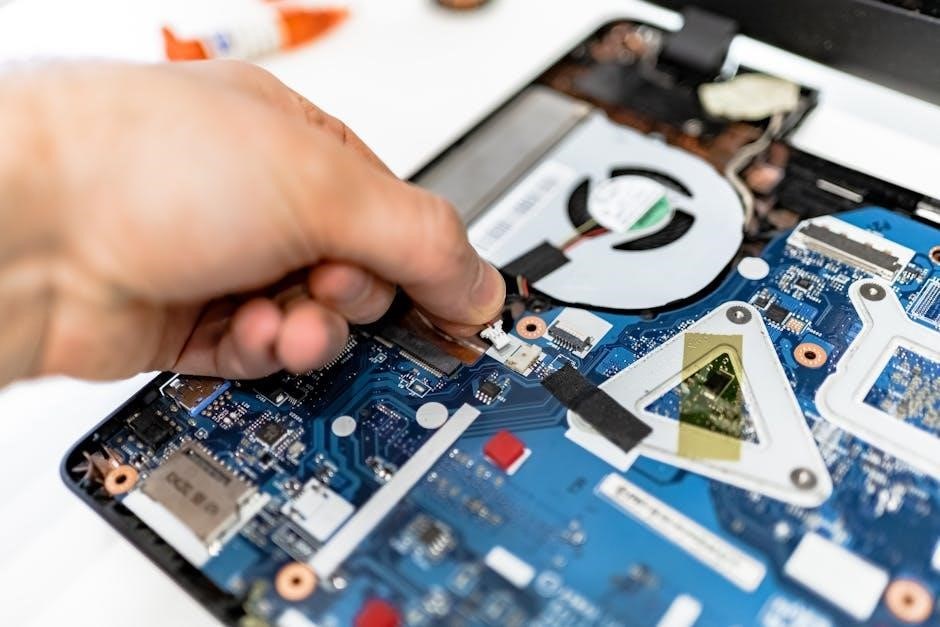
Disc Reading and Freezing Issues
Resolve disc reading issues by cleaning the disc and ensuring correct insertion. Address freezing by restarting the console and checking for system updates.
Wii Not Recognizing Discs
If your Wii isn’t recognizing discs, start by inspecting the disc for scratches or dirt. Gently clean it with a soft cloth and ensure it’s inserted correctly with the label facing up. Try using a different game disc to determine if the issue is with the disc or the console. If the problem persists, check the disc drive for dust or debris. Use compressed air to clean the drive gently. Ensure the Wii is placed on a stable surface and avoid moving it during operation. If none of these steps work, the disc drive may need professional repair or replacement.
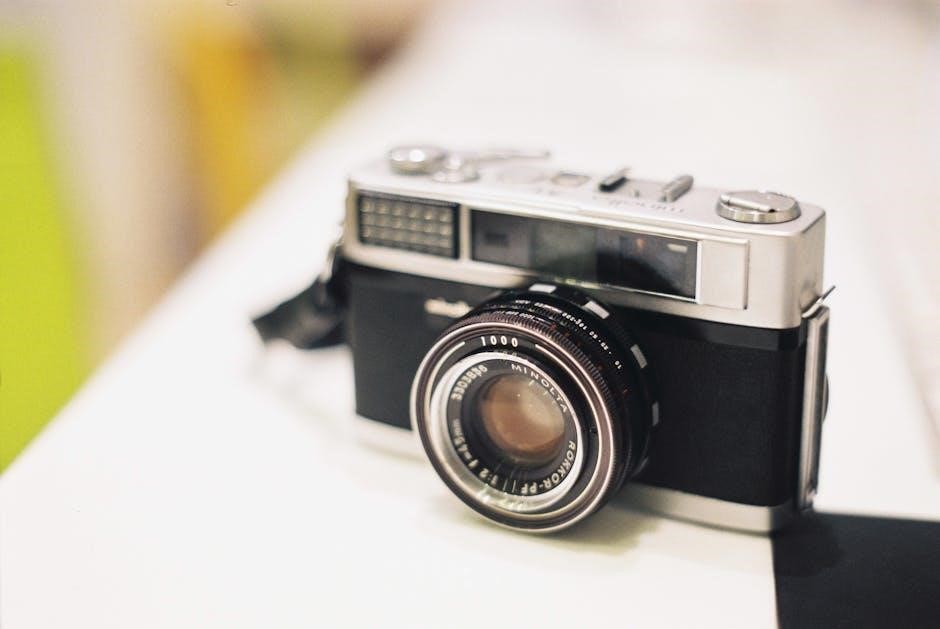
Games Freezing
If your Wii games are freezing during play, start by turning off the console and unplugging it. Wait a few minutes, then plug it back in and restart. This can reset the system and resolve temporary glitches. Ensure the console is in a well-ventilated area to prevent overheating, as this can cause freezing. Check for any available updates for your game, as outdated software may contain bugs. If the issue persists, clean the game disc gently with a soft cloth and ensure it’s inserted correctly. If freezing continues, try resetting the Wii to its factory settings, but be sure to back up your data first. If none of these steps work, the issue may require professional repair.
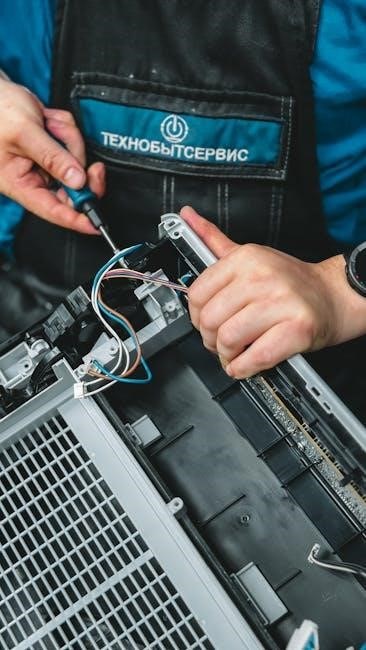
Controller Connection Problems
Experiencing Wii controller connection issues? This section covers syncing problems, random disconnections, and offers practical solutions to get your controllers working smoothly again.

Syncing Issues
Troubleshooting Wii controller syncing issues? Start by ensuring the Wii Remote’s batteries are charged. Weak batteries often cause connection problems. Next, check if the Wii Remote is properly synced. Press and hold the sync button on the Wii Remote and the console simultaneously for a few seconds. If syncing fails, try resetting the controller by removing the batteries, waiting a minute, and reinstalling them. Ensure no other devices are interfering with the Bluetooth signal. If issues persist, verify that your Wii Remote is not damaged or malfunctioning. Refer to the Wii manual for detailed syncing instructions. Regular syncing ensures optimal performance.
Random Disconnections
Experiencing random disconnections with your Wii controller? Start by checking the battery level, as low power can cause intermittent connections. Ensure the Wii Remote is properly synced and that no physical obstacles are blocking the signal. If using a wireless sensor bar, verify it is securely connected and positioned correctly. Check for interference from other electronic devices, such as cordless phones or microwaves. Resetting the Wii Remote by removing the batteries for 30 seconds may resolve the issue. If disconnections persist, inspect the controller for physical damage or corrosion. Clean the connectors gently with a soft cloth. Finally, ensure your Wii console is up to date with the latest software updates, as outdated firmware can cause connectivity issues.
Power and Overheating Issues
Address power and overheating problems by ensuring proper ventilation and checking for loose connections. Clean vents with compressed air and avoid blocking airflow to prevent shutdowns.
Console Not Turning On
If your Wii console won’t turn on, start by checking the power cord connection to both the console and the outlet. Ensure it’s securely plugged in. If the issue persists, inspect the power cord for any visible damage or fraying. Try using a different outlet to rule out electrical issues. Reset the AC adapter by unplugging it from both the console and the wall, waiting two minutes, and reconnecting it. If the console still doesn’t power on, check for any signs of physical damage or internal hardware faults. If all else fails, contact Nintendo Support for further assistance or potential repair options.
Sudden Shutdowns
Sudden shutdowns can be caused by overheating or power supply issues. Ensure your Wii has proper ventilation and clean its vents with compressed air to remove dust. Check the power cord and adapter for damage or loose connections. Try using a different outlet or adapter to rule out electrical problems. If the issue persists, update your Wii’s software, as outdated firmware can cause instability. Overheating often occurs in poorly ventilated areas, so move the console to a cooler spot. If none of these steps resolve the issue, contact Nintendo Support for professional assistance, as it may indicate a hardware malfunction requiring repair.

Display and Audio Problems
Resolve display issues by checking AV connections and TV settings. Ensure the Wii is connected properly and the TV is set to the correct input. For audio problems, verify volume settings and inspect AV cables for damage. If issues persist, test the Wii on another TV to determine if the problem lies with the console or display. Addressing these issues can help restore proper visuals and sound for an optimal gaming experience.
No Signal on TV
If your TV displays a “no signal” message, start by checking the AV connections. Ensure the Wii AV cable is securely plugged into both the console and the TV. Try using a different AV cable if possible. Next, verify that the TV is set to the correct input channel corresponding to the Wii’s connection. If issues persist, reset the Wii’s AV settings by going to the Wii Settings menu and selecting “Reset Wii AV Settings.” If the problem remains, test the Wii on a different TV to determine if the issue lies with the console or the display. Resetting the Wii by unplugging it for a few minutes may also resolve the problem. These steps can help restore the video signal and get your Wii functioning properly again.
Sound Distortion

Experiencing distorted sound on your Wii? Start by checking the volume settings on both the TV and Wii. Ensure they are not set too high, as this can cause audio distortion. Inspect the AV cables for damage or wear. Faulty cables often lead to poor sound quality. If using an HDMI converter, ensure it is compatible with the Wii, as some converters may not support audio output correctly. Try connecting the Wii to a different TV to see if the issue persists. If the problem remains, reset the Wii’s audio settings by going to the Wii Settings menu and selecting “Reset Wii Audio Settings.” This will restore default audio configurations and may resolve the distortion issue. Regularly cleaning the AV ports with a soft cloth can also prevent sound problems. If distortion continues, consider consulting Nintendo support for further assistance. Ensuring all connections are secure and using high-quality cables can help maintain clear audio output. Adjusting the audio settings in the Wii menu, such as selecting the correct speaker setup, can also improve sound clarity. By following these steps, you can identify and address the root cause of the distortion, ensuring an optimal gaming experience. If the issue persists after trying these solutions, it may indicate a hardware problem that requires professional attention. Always ensure your Wii is placed in a well-ventilated area to prevent overheating, which can exacerbate audio issues. Additionally, updating your Wii’s software to the latest version may resolve any firmware-related sound problems. If you’re using external speakers, check their connections and settings to ensure they are properly configured with the Wii. Experimenting with different audio settings can help pinpoint the exact cause of the distortion. For instance, switching between stereo and mono sound or adjusting the balance can reveal if the issue is specific to certain settings. If you’re using a home theater system, ensure it is compatible with the Wii’s audio output format. Some systems may require additional configuration to work seamlessly with the Wii. Testing the Wii with a different set of speakers or a different TV can help isolate whether the problem is with the console or the external equipment. If the distortion occurs only with specific games or channels, it may indicate a problem with the game disc or the channel’s audio encoding. In such cases, cleaning the disc or reinstalling the channel may resolve the issue. If the problem persists across multiple games and channels, it is likely a hardware issue with the Wii itself. In this case, contacting Nintendo support or visiting an authorized repair center is recommended. By systematically troubleshooting each component, you can effectively identify and resolve the source of the sound distortion, ensuring your Wii delivers high-quality audio for an immersive gaming experience. If the issue arises after a recent software update, reverting to a previous version of the firmware may be necessary. However, this should be done with caution, as it may affect other system functions. Always back up your data before making significant changes to the system. If you’re unable to resolve the issue through these steps, seeking assistance from a professional technician is advisable. They can diagnose and repair any internal hardware issues that may be causing the sound distortion. Ensuring your Wii is regularly maintained and updated can prevent future audio problems and enhance your overall gaming experience. By addressing sound distortion promptly, you can enjoy uninterrupted gameplay with clear and precise audio; If the distortion is accompanied by other symptoms, such as video issues or system crashes, it may indicate a more serious underlying problem that requires immediate attention. In such cases, ceasing use of the console and contacting support is crucial to prevent further damage. The Wii’s audio system is designed to provide a rich and immersive experience, and with proper care and maintenance, it can continue to deliver high-quality sound for years. If you’re experiencing persistent distortion despite trying all troubleshooting steps, it may be time to consider upgrading to a newer console or exploring alternative solutions to enhance your gaming setup. Always prioritize the health and functionality of your Wii to ensure optimal performance and enjoy the full potential of your gaming experience. If the distortion is intermittent, it could be due to interference from other electronic devices. Moving the Wii away from devices like cordless phones, microwaves, and baby monitors may help reduce the interference and improve audio clarity. Additionally, ensuring the Wii is placed on a stable and flat surface can help maintain consistent audio output. If the issue occurs during online gaming, it may be related to internet connectivity. Checking your internet speed and ensuring a stable connection can help resolve audio delays or distortions caused by lag. If the distortion is specific to certain games, it may be due to the game’s audio settings or compatibility issues. Adjusting the in-game audio settings or updating the game software may resolve the problem. If the issue persists after updating, reaching out to the game’s support team for further assistance is recommended. By thoroughly investigating each potential cause and implementing the appropriate solutions, you can restore your Wii’s audio to its optimal state and enjoy a seamless gaming experience. If the distortion is accompanied by a loss of audio, it may indicate a more severe hardware issue, such as a faulty audio chip or damaged internal components. In such cases, professional repair or replacement of the affected parts is necessary. If the Wii is under warranty, contact Nintendo support to explore your options for repair or replacement. If the warranty has expired, obtaining a quote from a reputable repair service can help you determine the best course of action. Ensuring your Wii is handled with care and protected from physical damage can prevent such issues from arising in the future. If the distortion is caused by a faulty AV cable, replacing it with a high-quality alternative can resolve the issue. Always purchase accessories from reputable sources to ensure compatibility and durability. If the problem is related to the Wii’s internal audio processing unit, it may require advanced diagnostic tools and expertise to repair. In such cases, consulting a professional electronics technician who specializes in gaming consoles is advisable. They can assess the issue and provide a detailed report on the necessary repairs. If the distortion is caused by a software glitch, performing a system reset or reinstalling the Wii’s operating system may resolve the issue. However, this should be done with caution, as it may erase saved data and settings. Always back up your data before attempting such procedures. If the distortion is caused by a corrupted system file, reinstalling the affected software or updating the Wii’s firmware may resolve the issue. If the problem persists after these steps, it may indicate a deeper hardware issue that requires professional attention. By addressing sound distortion promptly and thoroughly, you can maintain the quality of your Wii’s audio output and ensure a satisfying gaming experience. If the distortion is caused by a malfunctioning Wii Remote, adjusting or replacing the remote’s speaker may resolve the issue. If the remote’s internal components are damaged, contacting Nintendo support for repair or replacement options is recommended. If the distortion is caused by interference from other wireless devices, using a wired connection or relocating the Wii to a less congested area may improve audio clarity. If the issue is related to the Wii’s internal audio processing, it may require advanced troubleshooting techniques, such as checking for loose connections or damaged components within the console. In such cases, opening the Wii and inspecting the internal hardware may be necessary. However, this should only be done by someone with experience in electronics repair, as improper handling can cause further damage. If the distortion is caused by a faulty HDMI converter, replacing it with a high-quality, Wii-compatible converter can resolve the issue. Always ensure that any third-party accessories are verified for compatibility with the Wii to avoid such problems. If the distortion is caused by a power supply issue, ensuring the Wii is receiving stable power can help resolve the problem. If the power cord is damaged or the outlet is faulty, replacing or relocating the power source may improve audio performance. If the distortion is caused by a software conflict, reinstalling or updating the affected software may resolve the issue. If the problem persists, resetting the Wii to its factory
Software Update Errors
Encountering errors during Wii software updates can be frustrating. Common issues include interrupted downloads or corrupted files. First, ensure a stable internet connection. Restart your router and Wii, then retry the update. If the issue persists, check for overheating, as this can disrupt the process. Allow the console to cool down before attempting again. Clearing the system cache in Wii Settings may also resolve the problem. If errors continue, consider reverting to a previous firmware version using an SD card with the old firmware. Always back up your data before making changes. Contact Nintendo support for further assistance if issues remain unresolved. Regular updates are crucial for optimal performance, so resolving these errors is essential for a smooth gaming experience.
